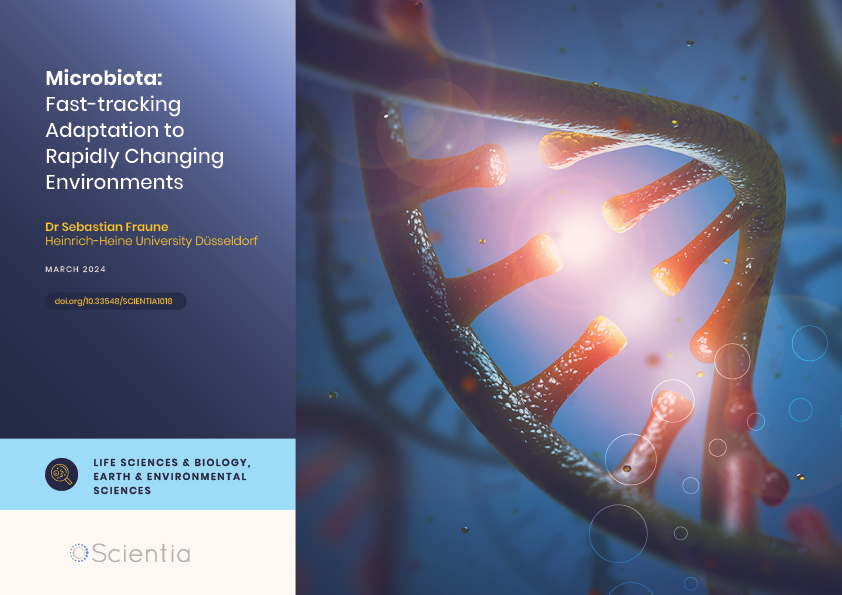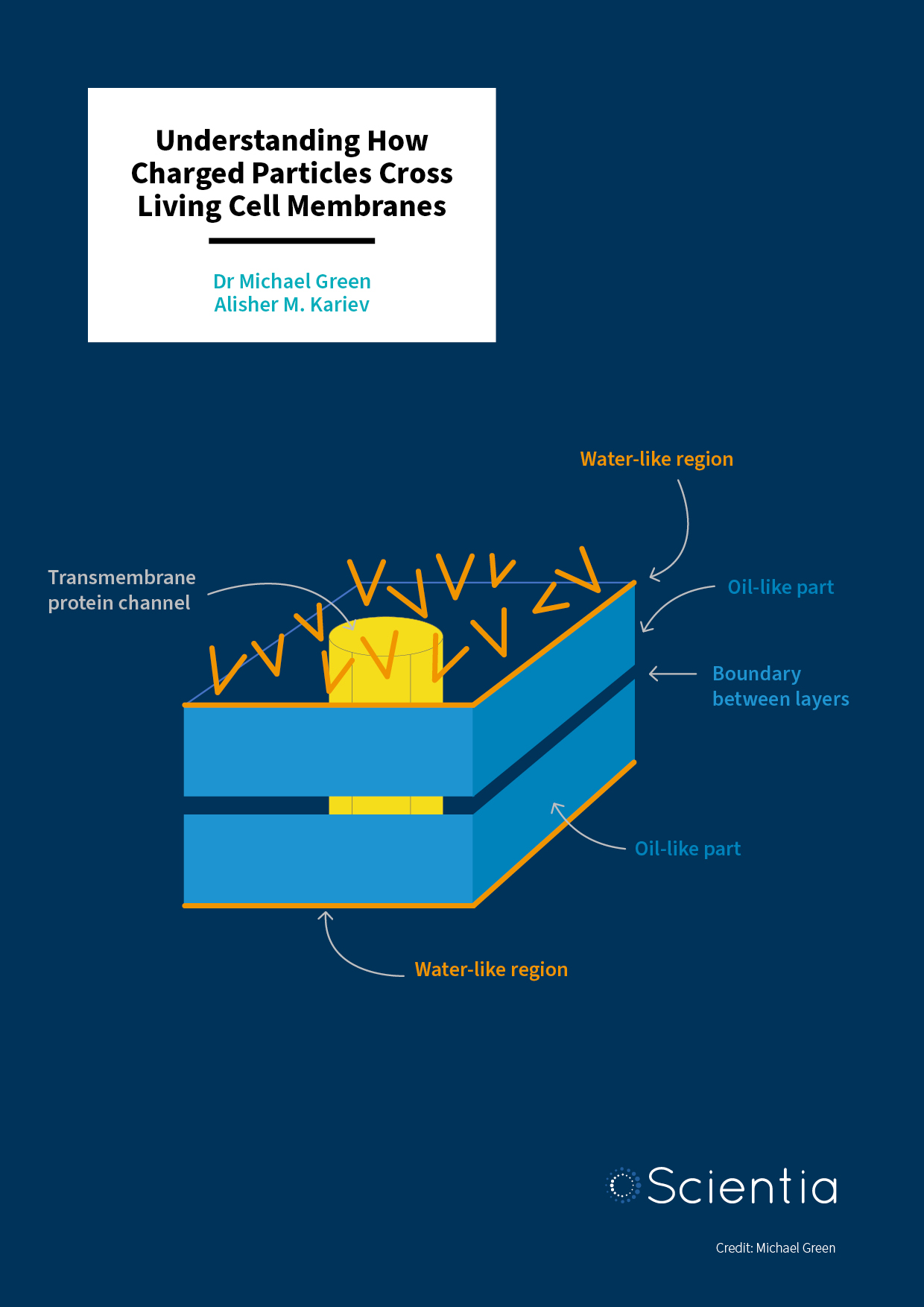Dr Michael Cherney – Professor Daniel Fisher | Unlocking Woolly Mammoth Mysteries: Tusks as Hormone Time Capsules
The impressive tusks found on proboscideans (the order of mammals that includes elephants, woolly mammoths, and mastodons) are like time capsules, preserving detailed records of their bearers’ lives in the form of growth layers and chemical traces. Frozen in time for thousands of years, these layers can unlock secrets about the lives of long-extinct relatives of modern elephants. Dr Michael Cherney and Professor Daniel Fisher from the University of Michigan used innovative techniques to extract and analyse steroid hormones preserved in woolly mammoth tusks. This ground-breaking work opens new avenues for exploring the biology and behaviour of extinct species.
Mammoth Tusks as Biological Archives
Woolly mammoths, the iconic Ice Age relatives of modern African and Asian elephants, have captured our imaginations for centuries. Despite the wealth of information gleaned from their bones, hair, and even occasional preserved carcasses that emerge from the permafrost, many aspects of their biology and behaviour remain enigmatic. However, their tusks may be the key to unlocking these mysteries.
Like the tusks of modern elephants, woolly mammoth tusks grew by adding new layers of dentin (the hard, bone-like tissue that makes up the bulk of the tusk), from the first layers laid down near the tip of the tusk when the animal is a juvenile, to the last layers added near the tusk base, inside its conical pulp cavity. These growth layers, visible in cross-sections of tusks, provide a chronological record of the animal’s life, much like the rings in a tree trunk. As dentin forms, it incorporates chemical traces such as hormones from the animal’s body. This has the potential to tell us new things about an individual mammoth’s life, based on the long-hidden information in its tusks.
Extracting Hormones from Ancient Dentin
Dr Michael Cherney and Professor Daniel Fisher (both at the University of Michigan) and their colleagues recognised the potential of tusks as time capsules containing endocrine data, theorising that measurements of steroid hormones could provide direct evidence of physiological changes linked to reproductive behaviours. They set out to use dentin in tusks to gain insights into the development, reproduction, and behaviour of extinct and living proboscideans.
However, extracting and measuring steroid hormones from the dentin posed significant technical challenges. After developing a new method for extracting steroid hormones from powdered tusk dentin, the team analysed the extracted hormones using a highly sensitive and specific analytical technique called liquid chromatography-tandem mass spectrometry (LC-MS/MS).
Decoding Testosterone Patterns in Tusks
To test the validity of their approach, the team first analysed testosterone levels in a tusk of a modern male African elephant. Testosterone is a key male reproductive hormone that regulates many aspects of physiology and behaviour. This includes annual episodes of heightened aggression and sexual activity known as musth, which occurs in adult male elephants. These episodes are believed to enhance mating success but can also lead to fatal conflict between males.
The analysis revealed clear annual cycles of testosterone in the elephant tusk, with peaks corresponding to the expected timing of musth episodes. This finding confirmed that steroid hormones were preserved in tusk dentin and could be reliably extracted and measured using the team’s protocol, suggesting that the same technique could be applied to woolly mammoth tusks.
Musth in Mammoths: An Ancient Annual Rhythm
Encouraged by their success with the modern elephant tusk, the team turned their attention to a tusk from an adult male woolly mammoth that lived around 34,000 years ago in what is now Siberia. The tusk was discovered in 2007, preserved intact in permafrost, about 1,200 kilometres northwest of the city of Yakutsk.
By finding out whether or not woolly mammoths also experienced musth, the team hoped to learn more about the behaviours and risks surrounding reproduction. When analysed, the tusk showed clear annual testosterone cycles. This strongly suggests that adult male woolly mammoths experienced musth in much the way their modern elephant cousins do, with musth cycles that were similar in duration and hormonal activity to those experienced by modern elephants.
The team found that this pattern of annual testosterone cycles did not appear in samples taken from parts of the tusk that formed before the animal reached sexual maturity. They also analysed a tusk from a female woolly mammoth and found consistently low testosterone levels, which was to be expected given that female elephants do not experience musth. These findings not only validated the team’s approach but also highlighted the potential for using tusk hormone profiles to determine the age and sex of extinct proboscideans.
A Window into the Past and Future
Dr Cherney, Professor Fisher and their collaborators believe this to be the first endocrinological evidence that woolly mammoths experienced musth, and they are excited about the potential of their new discovery to shed light on the biology and ecology of extinct species. By comparing hormone profiles from different individuals, populations, and species, they hope to gain insights into topics such as reproductive strategies, stress responses, and even the timing and causes of extinction events.
The team is also keen to apply their approach to other living and extinct species (including early hominids and modern humans), as their research has demonstrated the potential of dental growth records to reveal hormonal changes across an individual’s lifetime. Teeth are among the most commonly preserved animal remains in the fossil record. The fact that some teeth preserve records of hormonal activity means they could provide tantalising insights into the lives of ancient humans and animals.
This ground-breaking work has opened up a new window into the lives of animals of the past and paved the way for advances in understanding the endocrinology of extinct species – palaeoendocrinology. By unlocking the hormonal secrets hidden in tusks, Dr Cherney, Professor Fisher and their colleagues are bringing the behaviour and biology of a vanished species to life. This exciting discovery could allow us to map some of the breeding behaviours of modern elephants onto their long-extinct relatives and give us clues about how these magnificent titans of the tundra lived.
SHARE
DOWNLOAD E-BOOK
REFERENCE
https://doi.org/10.33548/SCIENTIA1030
MEET THE RESEARCHERS

Dr Michael Cherney
Division of Metabolism, Endocrinology, and Diabetes
University of Michigan Medical School
Ann Arbor, MI
USA
Dr Michael Cherney received his Bachelor of Arts in Anthropology from the University of Michigan in 2002 and his PhD in Geological Sciences, also from the University of Michigan, in 2016. He is currently a Research Lab Specialist in Metabolism, Endocrinology, & Diabetes at the University of Michigan Medical School. Dr Cherney’s research utilises an innovative approach to studying the lives of elephants and their extinct relatives by analysing steroid hormones preserved in their tusks. His interdisciplinary approach bridges palaeobiology, analytical chemistry, and endocrinology in shedding new light on the life histories and ecology of ancient creatures.
CONTACT
W: https://websites.umich.edu/~mcherney/Contact.html
X: @cherney_m

Professor and Curator Emeritus Daniel Fisher
Claude W. Hibbard Collegiate Professor Emeritus of Paleontology
Department of Earth and Environmental Sciences
Department of Ecology and Evolutionary Biology
Museum of Paleontology
University of Michigan
Ann Arbor, MI
USA
Professor Daniel Fisher obtained his PhD from Harvard University in 1975. Following a first academic appointment at the University of Rochester (1975–1979), he held a succession of academic positions at the University of Michigan (1979–2023), culminating in the transition to emeritus status in 2024. His current interests focus on palaeobiology and extinction of mastodons and mammoths, informed by the study of their tusks. His captivating research and long-standing expertise led to roles in a number of televised documentaries, including ones produced by BBC, Discovery Channel and the Smithsonian Channel. In 2005, he was appointed a Fellow of the American Association for the Advancement of Science and a fellow of the Paleontological Society. In 2002, he was appointed to a Collegiate Professorship, and in 2011, he received the Governor’s Award for Historic Preservation (State of Michigan).
CONTACT
E: dcfisher@umich.edu
W: https://lsa.umich.edu/eeb/people/faculty/dcfisher.html
KEY COLLABORATORS
Richard Auchus, Perrin Selcer, Adam Rountrey, Ethan Shirley, Scott Beld, Bernard Buigues, Dick Mol, Gennady Boeskorov, Sergey Vartanyan, and Alexei Tikhonov
FUNDING
University of Michigan Mcubed grant (2019–2021)
FURTHER READING
MD Cherney, DC Fisher, R Auchus, et al., Testosterone histories from tusks reveal woolly mammoth musth episodes, Nature, 2023, 617, 533–539. DOI: https://doi.org/10.1038/s41586-023-06020-9
MD Cherney, DC Fisher, MT Hren, EA Shirley, Stable isotope records of nursing and weaning: A case study in elephants with implications for palaeobiological investigations, Palaeogeography, Palaeoclimatology, Palaeoecology, 2021, 567, 110223. DOI: https://doi.org/10.1016/j.palaeo.2021.110223
DC Fisher, Paleobiology of Pleistocene proboscideans, Annual Reviews of Earth and Planetary Sciences, 2018, 46, 229–260. DOI: https://doi.org/10.1146/annurev-earth-060115-012437

REPUBLISH OUR ARTICLES
We encourage all formats of sharing and republishing of our articles. Whether you want to host on your website, publication or blog, we welcome this. Find out more
Creative Commons Licence (CC BY 4.0)
This work is licensed under a Creative Commons Attribution 4.0 International License. 
What does this mean?
Share: You can copy and redistribute the material in any medium or format
Adapt: You can change, and build upon the material for any purpose, even commercially.
Credit: You must give appropriate credit, provide a link to the license, and indicate if changes were made.
SUBSCRIBE NOW
Follow Us
MORE ARTICLES YOU MAY LIKE
Dr Sebastian Fraune | Microbiota: Fast-tracking Adaptation to Rapidly Changing Environments
As climate change continues at an unprecedented pace, the processes of natural selection and genetic mutation can no longer fully explain how some organisms adapt to their rapidly changing environments. Dr Sebastian Fraune from Heinrich-Heine University and an international team of researchers are the first to demonstrate a causal relationship between changes in the microbiome and changes in thermal tolerance. They propose that microbiota-mediated transgenerational acclimatisation can account for how animals adapt to their environments in much shorter periods of time than classical theory would predict.
Professor Danny Reinberg – Dr Gary LeRoy | Confronting a Rare and Deadly Cancer in Children
A diagnosis of cancer is never welcome but is particularly devastating when a child is found to have diffuse intrinsic pontine gliomas – a rare but particularly aggressive and treatment-resistant malignancy in the brain. In this article, we focus on the contributions of Professor Danny Reinberg and Dr Gary LeRoy at the University of Miami-Miller School of Medicine to understanding what makes these tumours so dangerous and, importantly, to developing much-needed approaches to improve the outcomes for these children.
Dr Jerome Goddard | Recovery from Tick Bite: New Insights from a Recent Case Study
Dr Jerome Goddard of Mississippi State University and Dr Julie Wyatt of Wyatt Dermatology Clinic recently presented a case study of a hard tick bite trajectory over 30 days. Their work provides a detailed and novel account of the healing trajectory of an uncomplicated tick bite.
Dr Michael E. Green – Alisher M. Kariev | Understanding How Charged Particles Cross Living Cell Membranes
Living organisms function through a complex interplay of cellular mechanisms. The movement of charged atoms across cell membranes is key to diverse processes like cell growth and electrical signalling in the brain, and channels in these membranes open and close to allow charged atoms to pass through. Dr Michael Green and Alisher M. Kariev at the City College of the City University of New York challenge current models of channel opening and closing to provide a more complete understanding of this crucial and widespread biochemical process.





